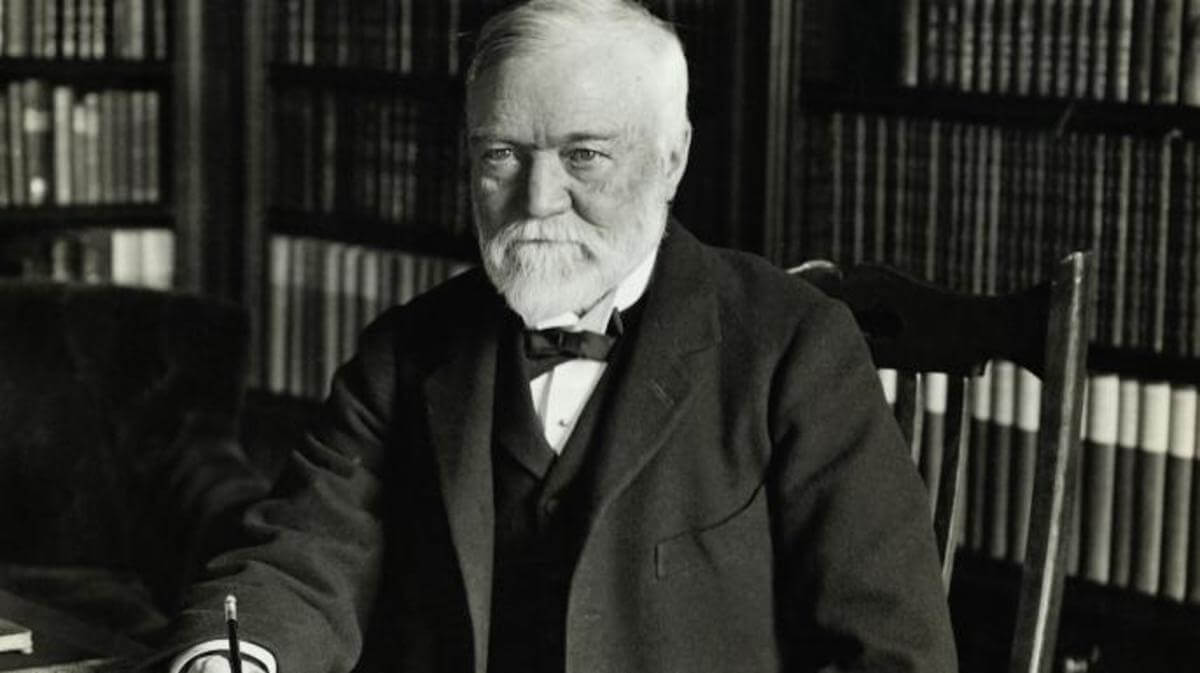
Profile
Over the course of his lifetime, Andrew Carnegie amassed one of history’s most staggering fortunes. When the industrialist retired in 1901, at the age of 66, he was the richest man in the world, with a net worth of $4.8 billion in today’s money.
Carnegie created a steel empire that revolutionised the way steel was produced in America. He controlled and owned all the materials, infrastructure and transportation, which allowed him to cut costs and up efficiency to beat all his competitors. The steel he produced built railroads, bridges and modern buildings and by 1900 profits had exceeded $1.2 billion accounting for inflation
Not bad for a Scottish immigrant who arrived in America poor, uneducated and utterly lacking in business connections.
Carnegie was born in 1835 in Dunfermline, Scotland, into a working class family, headed by his handloom weaver father, William. When the Industrial Revolution came to Dunfermline, consequently crushing William’s livelihood with the introduction of the mechanised power loom, the family immigrated to the industrial town of Allegheny, Pennsylvania (now part of Pittsburgh), in search of new opportunities.
Carnegie, who was 12 at the time, quickly landed a job as a bobbin boy in a cotton mill, earning $1.20 a week or $38 in today’s money. Fiercely intelligent, charming and ambitious, he longed for more in life, and spent nights bettering himself through reading, writing and night classes.
At 14, he was hired as a messenger in a telegraph office. From there, he hustled his way into the Pennsylvania Railroad Company, convincing superintendent Thomas A. Scott to take him on as his private secretary in 1853. Six years later he had replaced Scott, and had taken out loans to make a series of canny investments in iron, oil, steel and railway technology — all of which would contribute to his future fortune.
By the time Carnegie was 30, America was on the cusp of an economic and technological revolution. The Gilded Age began in 1965 sparking the rise of America as an industrial powerhouse. Before this in 1848 (the year the Carnegies set sail for America) 300,000 miners from Europe, Asia and all over America flooded into California, attracted by the promise of gold, oil and wealth. Industrialists, spotting an opportunity, built roads and railways at lightning speed to accommodate these new arrivals (the indigenous population of the entire state numbered only 92,000 in 1850), (6) and erected new towns to house them — all to a tremendous profit.
Carnegie, anticipating how important steel would become in the colonization of the western states, founded one of America’s first steel plants in 1875 called the J Edgar Thomson Steel Works in Braddock, Pennsylvania. The secret of his success was in hiring tough, capable employees like Henry Clay Frick who became his Chairman and Captain Bill Jones who ran the mill ensuring that the workers were fairly treated.
When Carnegie sold the Carnegie Steel Company to financier J.P. Morgan for $480 million (nearly $15 billion today) in 1901, he was rich beyond his wildest dreams. But rather than spend the rest of his life hoarding his fortune, Carnegie set about giving away his millions with the same zeal in which he had acquired them. He was interested in philanthropy before the sale creating a foundation in Pittsburgh in 1896 to progress culture and education in the city but his ability to give and the time in which to do it escalated afterwards. He built 2,509 libraries between 1883 and 1929, and made donations to aid scientific, economic and legal research. During his lifetime, he spent more $350 million on philanthropic efforts.
With his efforts, he seemed to heed a warning he first issued in an 1889 essay titled “The Gospel of Wealth. “
“The man who dies leaving behind many millions of available wealth, which was his to administer during life, will pass away ‘unwept, unhonoured, and unsung,’” he wrote. “Of such as these the public verdict will then be: ‘The man who dies thus rich dies disgraced.”
One of his most ambitious initiatives was the Carnegie Endowment for International Peace, a think tank he founded in 1910. Carnegie wanted to advance the notion that world peace was attainable by engaging global decision makers, many of whom were his friends. Through the fund he re-built libraries ravaged by war in France, Belgium and Serbia. The Endowment published research on the effects of war, introducing the concept of ‘genocide’ to the wider world and it also helped establish a permanent United Nations Charter on Human Rights.
Carnegie died on his estate in Lenox, Massachusetts in 1919, just one year after the end of WWI, a conflict he tried hard to prevent. Today, his legacy lives on through the actions of modern philanthropists like Bill Gates and Warren Buffett, who created the Giving Pledge in 2010 to encourage their fellow billionaires to give away their fortunes. 204 people have signed up from 23 countries including Michael Bloomberg, Richard Branson and Diane von Furstenberg. Gates has spent $5 billion dollars on eradicating polio, a preventable disease that paralysed 350,000 in the 1980s in 125 countries. Buffett has given away over 70% of his $87 billion dollar fortune making him the most generous man in America.
Carnegie believed that everyone should be treated equally despite his or her wealth or privilege and he practised this in his own life. When he retired he returned to Scotland and bought a castle in the Highlands called Skibo where he invited his old friends and neighbours from Dunfermline but also his new American pals the Vanderbilt’s and Rockefellers. Dinner was a raucous affair that he greatly enjoyed. “There is little success where there is little laughter. ” How true.
Images Andrew Carnegie, Skibo Castle where he summered with his family in the Highlands.
Written by Melanie Grant for CNN Style in July 2019







